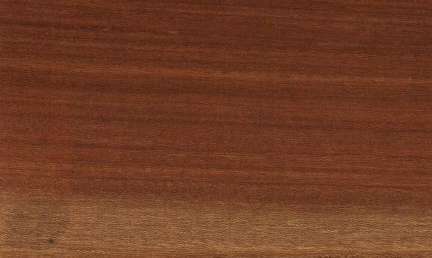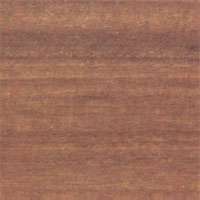  
Danta (Nesogordonia papaverifera)
Family: Sterculiaceae
Common names: Aborbora, Abumana, Acacia du Gabon, Ahia, Akumaba, Akumadua, Akumba, Alele, Apro, Apru, Apuro, Apuropurow, Arborbora, Awraw, Ayia, Baa, Bah, Bakabakue, Balake, Bana, Banu, Bello, Bukyu-akwa, Butuakwa, Cissinhungo, Danta, Denkyera, Denta, Ekumadu, Ekumbaa, Epro, Eprou, Epru, Ka-bakam, Kissin hungo, Kissinhungo, Kondofindo, Koti, Kotibe, Kotie, Kuapa, Majaagei, Mutsanya, Naouya, Odanta, Ogamiguia, Olbarbora, Olborbora, Opuropurow, Oro, Otala, Otutu, Ouringue, Ovoe, Ovoue, Ovoui, Owoe, Redwood, Sinani, Tsanya, Urhuaro
Distributed in: Angola, Benin, Cameroon, Central African Republic, Congo, Gabon, Ghana, Ivory Coast, Liberia, Nigeria, Sierra Leone, Zaire (Africa)
Distribution overview: This African species is distributed from Sierra Leone to Cameroon and the northern parts of Gabon. It is usually found growing with other species in dry deciduous and transitional forests.
Common uses: Agricultural implements, Boat building (general), Boat building: decking, Boat building: framing, Boat building: planking, Boxes and crates, Brush backs & handles, Cabinetmaking, Canoes, Carvings, Chairs, Chests, Concealed parts (Furniture), Cooperages, Core Stock, Decorative veneer, Desks, Dining-room furniture, Domestic flooring, Dowell pins, Dowells, Drawer sides, Excelsior, Factory flooring, Figured veneer, Fine furniture, Floor lamps, Flooring, Fuelwood, Furniture , Furniture components, Furniture squares or stock, Furniture, Handles, Handles: general, Hatracks, Heavy construction, Joinery (external): ground contact, Joinery, Kitchen cabinets, Light construction, Living-room suites, Millwork, Mine timbers, Office furniture, Parquet flooring, Plain veneer, Plywood, Poles, Posts, Radio - stereo - TV cabinets, Railroad ties, Rustic furniture, Shafts/Handles, Sporting Goods, Stools, Sub-flooring, Tables , Tool handles, Turnery, Utility furniture, Vats, Vehicle parts, Veneer, Veneer: decorative, Wardrobes, Wheel spokes, Wheels
Product sources: The ITTO reports that the species is a fairly important source of timber which is exported regularly.The wood is exported in small quantities from West Africa. Adequate supplies normally required for large projects are difficult to obtain, but small orders such as needed for miniature or modelling can be filled.
Environment profile: Data source is World Conservation Monitoring Center
Rare in Sierra Leone, Vulnerable in Benin
Tree size: Tree height is 30-40 m
Colors: the heart isRed, Reddish brownand the sapwoodRed, Well defined.The grain isWeak figure, the textureOily feel and the lusterMedium
Natural durability: Susceptible to marine borer attack, Very durable
Odor: No specific smell or taste
LightInduced Color Change: Lighter
Kiln Schedules: UK=E US=T6D2/T3D1 Fr=5
Drying Defects: Slight end splitting, Slight twist/warp
Ease of Drying: Variable
Tree Identification: Bole/stem form is straight
Comments: General finishing qualities are rated as good
Blunting Effect: Medium dulling effect on cutting edges
Boring: Slower speeds recommended for boring operations
Carving: Fair to Good Results
Cutting Resistance: Low cutting resistance
Gluing: Moderate gluing properties
Mortising: Fairly Easy to Very Easy
Moulding: Fairly Easy to Very Easy
Movement in Service: Fairly Easy to Very Easy
Nailing: Pre-boring recommended, Slight tendency for wood to split during nailing
Planing: Special attention required
Resistance to Impregnation: Sapwood is resistant
Resistance to Splitting: Poor
Response to hand tools: Poor machining properties due to severe and rapid dulling of cutting edges
Sanding: Good sanding finish
Veneering qualities: Easy to cut, No drying degrade. Dries flat without splitting
Steam bending: Moderate
Screwing: Possible if prebored, Screwing yields good results; Turning: Very good
Polishing: Satisfactory; Staining: Stains and finishes very well ;
- Numerical data Metric
- Numerical data English
- Strength properties
- References
 |
 |
 |
 |
| Item |
Green |
Dry |
Metric |
| Specific Gravity |
0,61 |
0,66 |
|
| Density |
|
753 |
kg/m3 |
| Bending Strength |
915 |
1324 |
kg/cm2 |
| Crushing Strength |
476 |
680 |
kg/cm2 |
| Hardness |
|
816 |
kg |
| Impact Strength |
|
111 |
cm |
| Shearing Strength |
|
147 |
kg/cm2 |
| Stiffness |
103 |
124 |
1000 kg/cm2 |
| Tangential Shrinkage |
7 |
|
% |
| Radial Shrinkage |
4 |
|
% |
| Weight |
737 |
721 |
kg/m3 |
| Maximum Load |
0,63 |
0,98 |
cm-kg/cm3 |
| Toughness |
|
239 |
cm-kg |
| Static Bending |
|
|
kg/cm2 |
|
 |  |  |  | | Item | Green | Dry | English | | Bending Strength | 13026 | 18841 | psi | | Density | | 47 | lbs/ft3 | | Hardness | | 1800 | lbs | | Impact Strength | | 44 | inches | | Maximum Crushing Strength | 6780 | 9676 | psi | | Shearing Strength | | 2093 | psi | | Stiffness | 1472 | 1766 | 1000 psi | | Toughness | | 208 | inch-lbs | | Work to Maximum Load | 9 | 14 | inch-lbs/in3 | | Specific Gravity | 0.61 | 0.66 | | | Weight | 46 | 45 | lbs/ft3 | | Radial Shrinkage | 4 | | % | | Tangential Shrinkage | 7 | | % | | Volumetric Shrinkage | 12 | | % | |
Max. crushing strength = high 0
Density (dry weight) = 46-52 lbs/cu. ft. 0
Bending strength (MOR) = high 0
Modulus of Elasticity (stiffness) = low 0
Hardness (side grain) = medium 0
Shrinkage, Radial = fairly large 0
Bending strength (MOR) = medium 0
Modulus of Elasticity (stiffness) = medium 1
Shrinkage, Tangential = fairly large
Shrinkage, Tangential = very small
Shearing strength (parallel to grain) = medium
Shearing strength (parallel to grain) = low
Toughness-Hammer drop (Impact Strength) = medium
Shrinkage, Volumetric = fairly large
Bending strength (MOR) = very high
Shrinkage, Tangential = moderate
Shrinkage, Radial = small
Toughness-Hammer drop (Impact Strength) = high
Shrinkage, Volumetric = moderate
Shrinkage, Tangential = small
Shrinkage, Radial = moderate
Shrinkage, Radial = large
Hardness (side grain) = hard
Density (dry weight) = 38-45 lbs/cu. ft.
Work to Maximum Load = low
Toughness-Hammer drop (Impact Strength) = very high
Shrinkage, Tangential = large
Shrinkage, Radial = very small
Shearing strength (parallel to grain) = very low
Shearing strength (parallel to grain) = high
Very heavy
Very hard
Very dense
Toughness-Hammer drop (Impact Strength) = low
Toughness (total work) = medium
Toughness (total work) = low
Shrinkage, Volumetric = small
Shrinkage, Volumetric = large
Resists denting and marring
Modulus of Elasticity (stiffness) = very low
Max. crushing strength = medium
Hardness (side grain) = very soft
Hardness (side grain) = soft
Compression strength (parallel to grain) = high
The bending strength qualities of this species in the air-dry condition is very high, far superior to those of Mahogany. Compression strength parallel to grain, or maximum crushing strength, is very high - higher than in Teak or Hard maple
Armstrong, F.H.,1960,The Strength Properties of Timber,Forest Products Research Laboratory, London Bulletin,No.45Bentum, A.L.K.,1969,Properties of Ghanian Timbers - Kaku,Ghana Forest Products Research Institute Technical Newsletter,3(1,pp27-29Bois et Forets des Tropiques,1949,Kotibe (Cistanthera papaverifera,Bois et Forets des Tropiques,No.10,pp171-4Bois et Forets des Tropiques,1974,Kotibe (Nesogordonia papaverifera,Bois et Forets des Tropiques,No.157, pp41-52Bolza, E., Keating, W.G.,1972,African Timbers - the Properties, Uses and Characteristics of 700 Species,C.S.I.R.O. Div. of Building ResearchBond, C.W.,1950,Colonial Timbers,Sir Issac Pitman & Sons Ltd. LondonChalk, L.,1933,Twenty West African Timber Trees,Forest Trees and Timbers of the British Empire,Part 2Chudnoff, M.,1984,Tropical Timbers of the World,U.S.A. Department of Agriculture, Forest Service, Forest Products,Laboratory, Madison.Cox, H.A.,1939,A Handbook of Empire Timbers,Forest Products Research Laboratory, Princes RisboroughCudjoe, F.S.,1969,A Key to the Family Sterculiaceae in Ghana,Forest Prod. Res. Inst. Ghana Tech. Note, No.7Erfurth, T., Rusche, H.,1976,The Marketing of Tropical Wood A. Wood Species from African Moist Forests,F.A.O. Forestry DepartmentFarmer, R.H.,1972,Handbook of Hardwoods,HMSOForest Products Research Laboratory, U.K.,1945,A Handbook of Empire Timbers,Department of Scientific and Industrial Research Forest Products ResearchForest Products Research Laboratory, U.K.,1950,The Seasoning Properties of Exotic Timbers,Forest Products Research Laboratory, Princes Risborough, Department of,Science and Industrial Research Leaflet,No.44 and supplements 1 & 2Forests Products Research Laboratory, U.K.,1956,A Handbook of Hardwoods,Forest Products Research Laboratory, Princes Risborough, Department of,Science and Industrial Research, Building Research EstablishmentFrance - C.T.F.T./C.T.B.,1982,Guide pour le Choix des Essences Deroulables-pour la fabrication du,contreplaque,C.T.F.T./C.T.B. FranceFrance - C.T.F.T.,1961,Resultats des Observations et des Essais Effectues au CTFT sur Kotibe,C.T.F.T. Information techique,No.117France - C.T.F.T.,1966,Bois Tropicaux,C.T.F.T. Publ.,12France - C.T.F.T.,1977,Promotion of African Timbers - New Species,CTFT,35 LeafletsGhana - Timber Marketing Board,1969,Ghana Hardwoods,Timber Marketing BoardGhana,1967,Properties of Ghanian Timbers-Danta (Nesogordonia papaverifera,Ghana Forest Products Research Institute Technical Newsletter, 1(2,pp26-7HMSO.1972.Handbook of Hardwoods.2nd Edition.Revised by R.H. Farmer.Department of the Environment, Building Research Establishment, Princes Risborough Laboratory, Princes Risborough, Aylesbury, Buckinghamshire.Howard, A.L.,1948,A Manual of Timbers of the World.,Macmillan & Co. Ltd. London 3rd ed.Hughes, J.F.,1971,The Principal Timber Trees of Cameroon,Unpublished dataI.U.F.R.O.,1973,Veneer Species of the World,Assembled at F.P.L. Madison on behalf of I.U.F.R.O. Working Party on,Slicing and Veneer CuttingIrvine, F.R.,1961,Woody Plants of Ghana,O.U.P. LondonITTO.1986.Tropical Timber Atlas, Volume 1 - Africa.International Tropical Timber Organization (ITTO) and Centre Technique Forestier Tropical (CTFT, 45bis, Avenue de la Belle Gabrielle, Nogent-sur-Marne Cedex, France.Jay, B.A.,1968,Timbers of West Africa,TRADA, Red Booklet SeriesKeay, R.W.J., et al,1960,Nigerian Trees Vol.1,Nigeria Federal Department of Forest Research, IbadanKennedy, J.D.,1936,Forest Flora of Southern Nigeria,Government Printer LagosKinloch, D., Miller, W.A.,1949,Gold Coast Timbers,Govt. Printer Gold CoastKline, M. 1988. Nesogordonia papaverifera - Danta. In A Guide to Useful Woods of the World. Flynn Jr., J.H., Editor. King Philip Publishing Co., Portland, Maine. 1994. Page 243-244.Kloot, N.H., Bolza, E.,1961,Properties of Timbers Imported into Australia,C.S.I.R.O. Forest Products Division Technological Paper,No.12Kribs, D.A.,1950,Commercial and Foreign Woods on the American Market (a manual to their,structure, identification, uses and distribution,U.S.A. Penn. State College, Tropical Woods LaboratoryKryn, J.M., Forbes, E.W.,1959,The Woods of Liberia,U.S.A. Department of Agriculture,Forest Products Laboratory, Madison,,Report No. 2159Kunkel, G.,1965,The Trees of Liberia,German Forestry Mission to Liberia Report,No.3Lavers, G. M. 1966.The Strength Properties of Timbers.Forest Products Research Bulletin, No. 50.Ministry of Technology, Her Majesty's Stationery Office, London.Lavers, G.M.,1983,The Strength Properties of Timber (3rd ed. revised Moore G.L.,Forest Products Research Laboratory, Princes Risborough, Building Research,Establishment Report (formerly Bulletin No.50)Lincoln, W.A. 1986. World Woods in Color. Linden Publishing Co. Inc., Fresno, California.Organisation for European Economic Co-operation,1951,African Tropical Timber (Nomenclature, Description,OEECPatterson, D.,1988,Commercial Timbers of the World, 5th Edition,Gower Technical PressPerrot, E.,1921,Les Bois du Gabon,Larose ParisRendle, B.J.,1969,World Timbers (3 Vols.,Ernest Benn Ltd. LondonRevue des Bois et de ses Applications,1958,Kotibe (Cistanthera papaverifera,Revue des Bois et de ses Applications,13(2, p30Sallenave, P.,1955,Proprietes Phyiques et Mecaniques des Bois Tropicaux de l'Union Francaise,C.T.F.TSallenave, P.,1964,Proprietes Physiques et Mecaniques des Bois Tropicaux (Premier Supplement,C.T.F.T. Publ.,no.23Savill, P.S., Fox, J.E.D.,1967,Trees of Sierra LeoneSpalt, H.A., Stern, W.L.,1956,Survey of Africa Woods 2,Tropical Woods 16(106) pp65-97Spalt, H.A., Stern, W.L.,1956,Survey of African woods 1,Tropical Woods,115(105,pp 13-38Takahashi, A.,1978,Compilation of Data on the Mechanical Properties of Foreign Woods (Part,III) Africa,Shimane University, Japan, Research Report on Foreign Wood No. 7Taylor, C.J.,1960,Synecology and Silviculture in Ghana,University College of Ghana Thomas Nelson and SonsTimber Development Association Ltd.,1955,World Timbers (3 Vols.,Timber Development Association Ltd.Timber Review,1976,Sepetir (Sindora Spp. and Pseudosindora palustris,Timber Review,27 p15-6Titmuss, F.H.,1965,Commercial Timbers of the World,Technical Press Ltd., London, 3rd editionVoorhoeve, A.G.,1965,Liberian High Forest Trees,Centre for Agric. Publishing and Documentation, Wageningen
|










